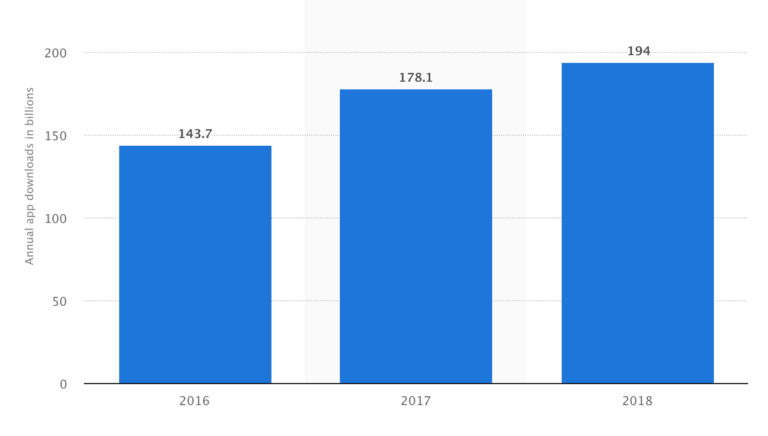The App Store is now over a decade old. According to Statista, over 194B apps were downloaded in 2018. Today there are more than 5B mobile users across the globe. Yet, despite these staggering statistics, the Field of Dreams syndrome still persists. Developers continue to fall into the old trap that if they build it, users will come.
However, developers don’t just need users to find their Field of Dreams. They also need them to stick around. The sticking around part is perhaps the biggest obstacle to overcome. You may leap over the initial hurdles of launching your app and achieving downloads, but then you’ve got to convince those users to keep coming back.
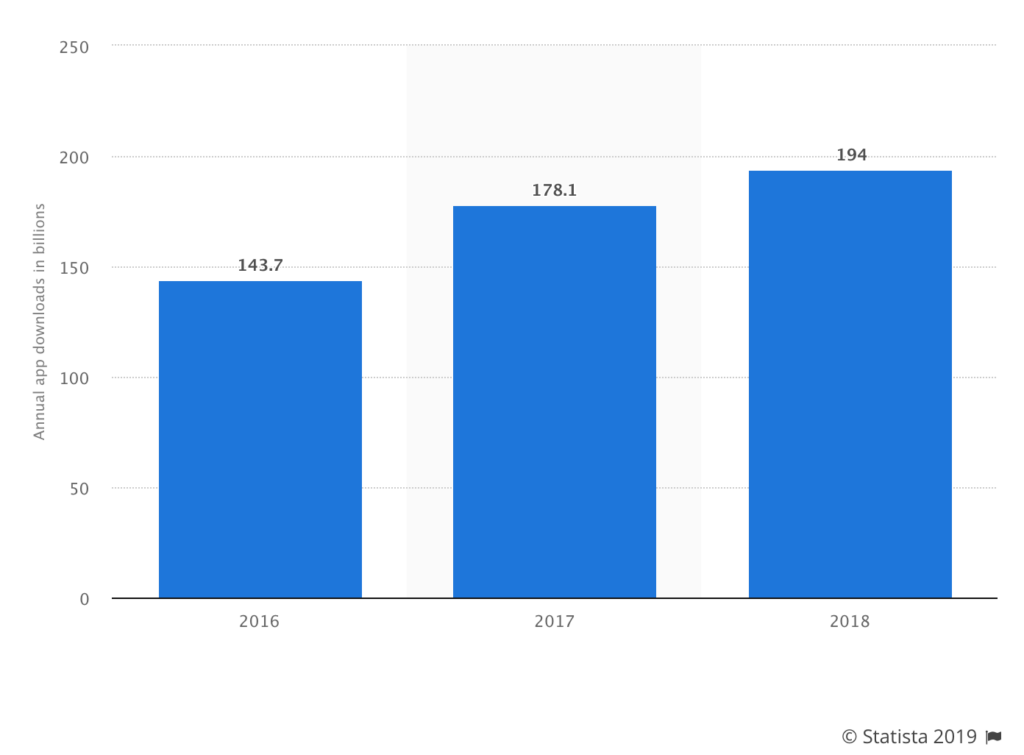
Today, we’re going to bust some myths around user retention, and while the harsh reality may burn a bit, there’s good news. There are surefire ways to increase your user retention and engagement rates that you can start implementing as soon as you finish this article.
Why Retention Matters
Before you can care about something, you have to understand why it matters and how it affects you, right? At first glance, the reason why retention matters is simple — if users don’t return, your entire user base will eventually disappear due to churn. But take a closer look, and you’ll see that the reality is much more complex and nuanced.
Here’s the thing: It’s not about getting your users to come back once or twice. It’s about getting them to come back again and again. It’s about having an engaged user base, a user base that has a strong, positive relationship with your app. As you’ve likely experienced yourself, the newness of an app wears off rather quickly. After a couple uses, something else may grab your attention, and you quickly forget the app you were using ever existed.
In fact, 80% of users abandon an app after just 3 days. Yikes. Maybe you’re thinking, “Well, I can just acquire more users. There are over 5B mobile users on the planet anyway.” Not so fast. Yes, you do need to also focus on user acquisition. There’s no doubt about that. But new users cost money. In fact, they cost more than retaining users you already have. It’s in the best interest of your app and business as a whole to re-engage and delight current users. You’ve already done the hard part of acquiring them. Now it’s time to remind them why they downloaded your app in the first place and make the experience worthwhile.
As mentioned earlier, the reality is more nuanced than you might expect. Let’s add another layer to the mix: User acquisition, retention, and engagement methods don’t exist in a vacuum. Ideally, they should all work in tandem. The more you work to retain and engage your current users, the easier it’ll be to encourage them to spread the word about your app, which will increase acquisition rates.
The Numbers Behind User Retention and Revenue
Retention is the lifeblood of your mobile app. It’s also critical to keeping money in the bank. Here are statistics that demonstrate this:
- 80% of future revenue comes from 20% of existing customers (Gartner)
- New customers cost 5x more than retaining an existing customer (Lee Resource Inc.)
- The likelihood of selling to an existing customer is 60-70% whereas the likelihood of selling to a new lead is 5-20%. (HubSpot)
- Revenue for the iOS App Store was $46.6B in 2018 and $24.8B for Google Play. (BusinessOfApps)
(Looking for insights into conversion rates by app category, store, and country? Check out AppFollow’s conversion rate benchmarks, updated monthly.)
User Retention Strategies
So, in short, it’s do or die with user retention. By now, you understand the importance of strong user retention rates and are probably eager to start implementing some new techniques. There are some strategies that work well for new apps and others that benefit seasoned apps the most.
Let’s dive in.
Retention Strategies for New Apps
Store Listing
For new apps, your work for retention begins before a user downloads your app. You’ve got to sell them on the value from the get-go. The easiest way to do this in your store listing is by focusing on the benefits of your app. Yes, features are important too. However, too many developers and publishers focus on talking about the latest and greatest features.
The problem? They forget to tell their users how their app helps them. Whether it’s by helping them keep track of air quality or by providing a fun, entertaining outlet to learn a new language, your users want to understand how your app will benefit them from the very beginning. Explain the value of your app clearly and be persuasive about it. Your visuals in the store listing should reinforce those same benefits.
Onboarding
If there is one piece of advice you should take around onboarding, it’s this: keep it simple. Let users get into your app as quickly as possible. Multiple fields and steps to follow in the onboarding process is asking for high abandonment rates. You can always A/B test your registration options. Generally speaking, giving users a couple of options to register with an email or social media platform account is enough.
Make it easy for users to understand the core of how your app works. They don’t need to get into the weeds at the very beginning. Instead, limit yourself to 3-5 screens with short, clear messaging and appealing images.
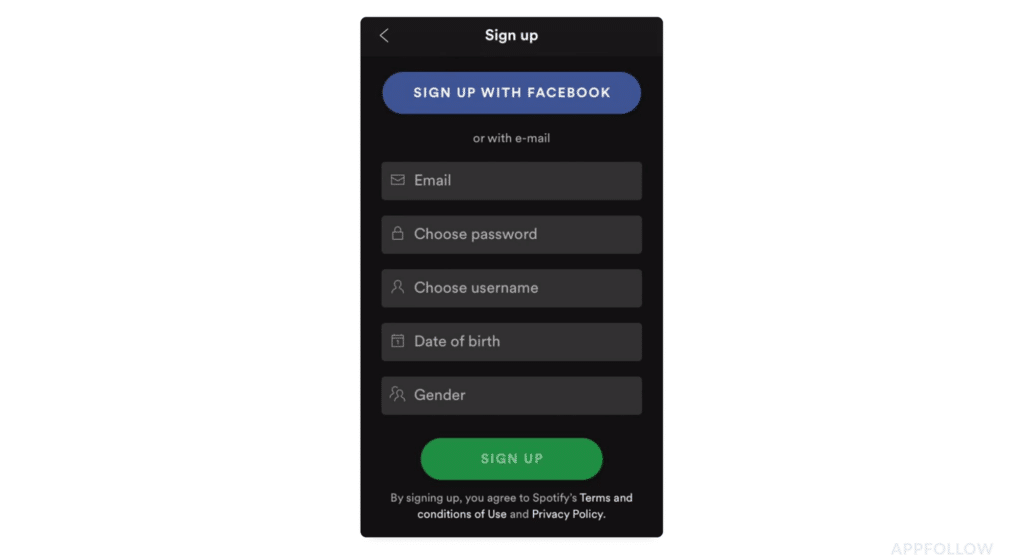
Immediate Value
This one goes back to the benefit of your app. What are your users trying to do? Master a new skill? Relieve stress? Entertain their kids for a bit? Whatever your user’s goal is, allow them to achieve it in the first few minutes of use.
Take for example, the self-care app, Shine. Within a second of registering and signing in, users are given a three-day challenge to mastering self-confidence. A chatbot walks you through customizing your experience with the app for greater results.
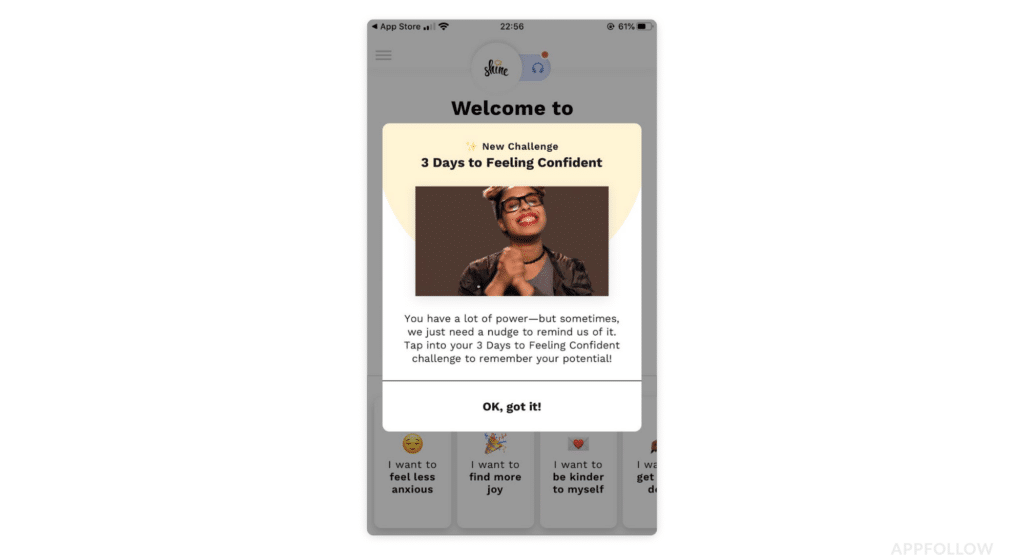
Retention Strategies for Seasoned Apps
Surprise and Delight Users
Just how personalized is your user experience? Do you provide a unique experience based on user segments or is the overall feel more one-size-fits-all? There’s a lot of competition out there, and one of the best ways to stay ahead is by surprising your users. Personalization is a fantastic way to do that.
Personalization can be something as simple as using the name of your user in the app (where applicable) or in push notifications. Then, you can take things up a notch once you master the basics. For example, you can tailor your push notifications (see more below) to your users’ most recent actions and stage. Ideally, you’ll have messaging around each drop-off point and action within your app. As a starting point, here are some ideas:
- Push notification to share a review to users who have provided feedback in the last quarter
- Rewards pack for users on their birthday
- 3-day challenge for dormant users who were previously highly engaged
- Promotion for users whose subscription or free trial is expiring
Communicate
Push notifications are a key part of user retention. You’ve probably noticed that your users who have opted in to receive push notifications engage more with your app. According to Localytics, mobile users are being retained at a higher rate than in years past. Push engagement rates increased 38% on Android and 32% on iOS from 2017 to 2018. Push notifications are one of the most effective ways to engage with users, share updates, and shape their overall experience. News about updates, new features, and promotions are enticing ways to re-engage users. Make sure your messaging also reflects what users are (or aren’t) doing. LoseIt, a popular calorie counting app, implements this strategy by compelling users to log back in after a weekend away.

Even better? They provide an opportunity to ask for feedback — but you’ll need to do sparingly and strategically. Allow users to share ideas, report concerns, and provide insights. You can take in their ideas on the front-end and address any issues before they generate bad reviews. You’ll also get to know your users better and be able to continue to improve their experience.
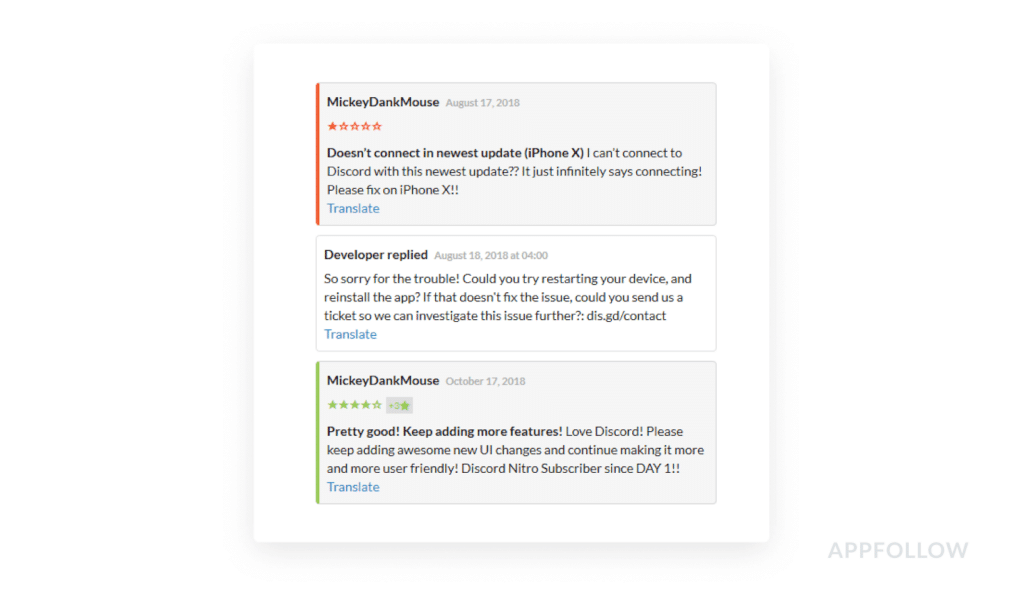
Be Responsive
Users want to hear from you. As your app grows and becomes more successful, you might fall into the trap of talking “at” your users rather than talking to them. Don’t send push notifications and update your store listing when you have an update. Instead, engage and inform your users about the changes. Your reviews are an excellent starting place. If you’ve had users complain about a bug in the past or request a new feature, go back to those reviews and let them know about the changes. Here’s a step-by-step workflow to follow.
Tips for Higher User Engagement
Remember: acquisition, retention, and engagement should all work together. As you acquire and keep more users, you’ll need strategies in place to keep them happy. It is possible to retain your user base at some level without high engagement, but it’s usually not a good thing. You want users who come back on a regular basis because they’re more likely to convert, make purchases, and share your app with others.
- For non-gaming apps, use gamification. Add rewards for completing tasks, streaks, and activities if you haven’t already.
- Develop a referral program and show users their progress through a dashboard and metrics.
- Provide support through in-app chats so users don’t have to exit your app for help.
- Create a digestible, easy-to-follow library of how-to guides and tips within your app.
- Make use of deep links to route users directly to in-app content from any channel/platform — or to highlight another one of your apps.
- Tailor your messages and content to the season.
- Allow users to download parts of your app so they can continue to use when traveling. (This one is especially great for education, fitness, and health apps!)
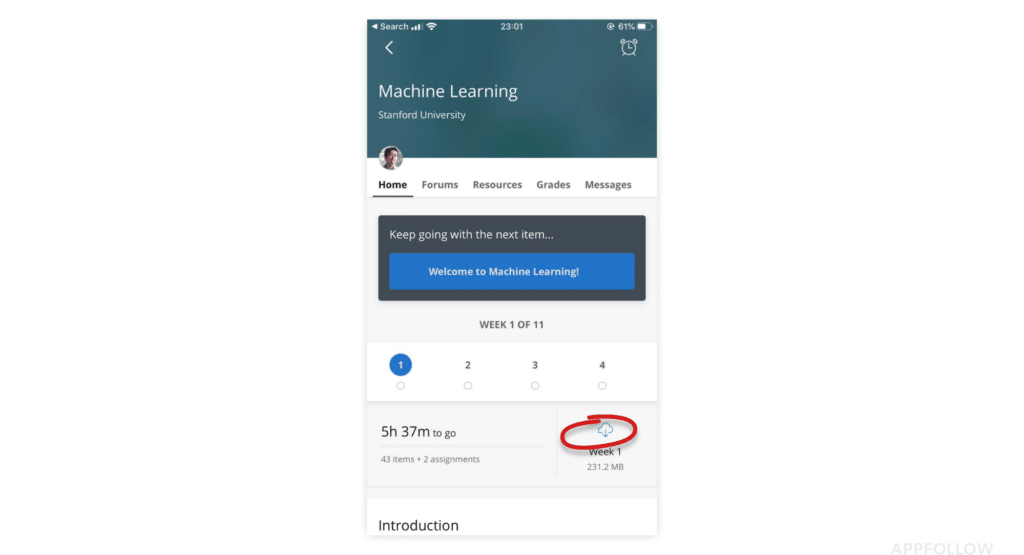
As work to acquire, retain, and engage users, stay focused on providing them with value and benefits. As you encounter bumps along the way, be quick to resolve any issues your users may face. Monitor reviews carefully, track changes, and provide a solution as quickly as possible. Doing so will not only help you to avoid app user churn; it’ll also show your commitment and credibility to your audience.
To discover more strategies for driving app user engagement and retention, read 3 Ways to Drive Mobile Growth with Deep Linking.
About AppFollow:
AppFollow is a mobile product management service that delivers critical data changes around app rating, ranking, keywords and user reviews to Slack, email, Zendesk or one of 30 other integrations. It helps app owners improve app visibility in app stores, increase user loyalty and monitor app performance in real time worldwide.






















